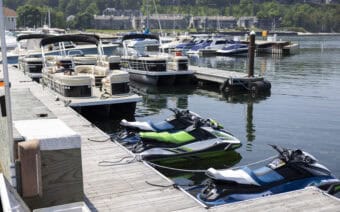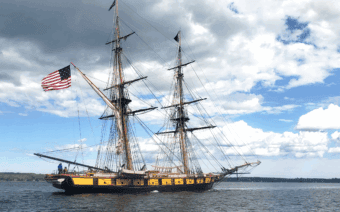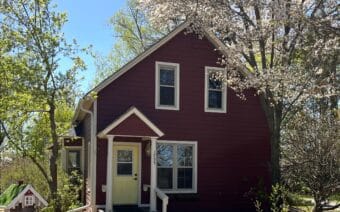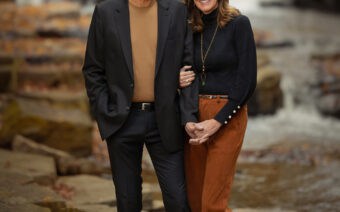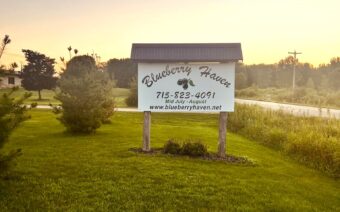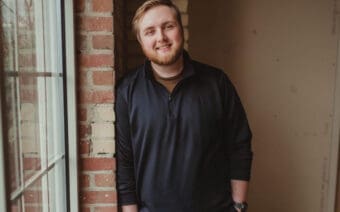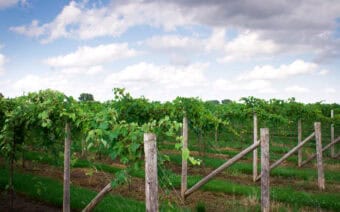
December 28, 2022
GREEN BAY – For the last three decades, the Weidner Center – located on the University of Wisconsin-Green Bay (UWGB) campus – has been the home to musicians, actors, actresses, dancers, comedians and a variety of other creatives.
Looking back, Kelli Strickland, artistic and executive director at UWGB, said the performing arts center has come a long way in 30 years, which has included a variety of changes.
The beginning
While Strickland said there has been some confusion as to how long The Weidner has been a part of the UWGB, the director said it’s been a division of the university right from the beginning.
“At the time, many of the facilities with UWGB were a combination of university/state funding and private funding,” she said. “In the case of The Weidner, it was built with 80% community funding and 20% university/state funding, so it was conceived as a facility of the university.”
When the Weidner opened in 1993, Strickland said the focus of the performing arts center was on Broadway traveling musical tours.?

The groundbreaking for The Weidner Center happened in 1992. The facility opened that next year in 1993. Photo Courtesy of UWGB
The production that “really put The Weidner on the map,” she said, was a tour of Phantom of the Opera in 1996, just three years after opening.
Strickland said the show lasted several weeks.
“It was remarkable because multi-week sit-down runs with sales at the capacity The Weidner was making for each performance were more associated with much larger markets,” she said. “So you would expect to see a many-week sit-down in a major urban center with huge populations of people, but the fact there was a region – even outside our region into the western parts of the state – drawing audiences from a big geographical footprint (was huge).”
Internal and external changes
Since the Phantom of the Opera, Strickland said the kinds of events offered to the community have shifted greatly.
When a more centralized tour routing process was created for Broadway shows, Strickland said The Weidner went through a “bit of an identity crisis,” and there was a “need for an investment in the center to forge a new path, to build a new artistic identity.”
“Unfortunately, it came at a time when the University of Wisconsin System was also undergoing a pretty dramatic chapter,” she said. “Because it was a university entity, the university was not in a position to make the kind of investment that was needed to forge that new path, and so that resulted in a dramatic decrease in the kinds of presented titles The Weidner was able to bring to the facility.”
//s3.amazonaws.com/appforest_uf/f1672254759749x465521763183236200/richtext_content.webpKelli Strickland, artistic and executive director of The Weidner, said building the center was an act of “painstaking love,” and not a detail was spared in creating a state-of-the-art facility for the community. Photo Courtesy of UWGB
Strickland said thankfully, Weidner Center Presents – a 501(c)3 nonprofit started in 2005 separate from The Weidner itself – helped keep some of the facility’s most important programs in its communities during that time.?
“That continued on until 2012, when there was essentially a re-integration of the programmatic staff and the facility operations staff,” she said. “It brought those two operations together in a university-housed staff again. So, (The Weidner) has morphed over the years, a few times.”
Now, the facility presents a variety of different events – from comedies, film screenings, its education series and music performances.
Physical changes
Throughout the decades, Strickland said the performing arts center has also received a facelift or two.
When the building was originally created in 1993, she said the hall was built “with painstaking love.”
“There was terrific care and attention to detail, notably the acoustics,” she said. “All the feeding is wood, not metal, which is a much more forgiving material for acoustics and creates a warmer acoustical environment… The wooden panels are curved wood because that helps create a more acoustically perfect hall rather than sound bouncing off of flat surfaces.”
Then, in 1998, just five years after the center had opened, Strickland said there was a major expansion in the public parts of the building, as well as in the administrative and backstage areas.
The grand foyer was expanded and a large hand-blown glass chandelier by artist Dale Chihuly was added.
The expansion of the loading docks, Strickland said, were also a huge benefit to the facility.
“To this day, you don’t talk to many tours who don’t talk about what a dream it is to load in and out of The Weidner,” she said. “That expansion was critical in making the facility a state-of-the-art hall.”
Additional improvements would come 20 years later, in 2018, when Strickland said there was a complete cosmetic renovation of the public spaces, including new carpeting, new signage, new paint and a major lighting equipment upgrade.
Over the years of changes, Strickland said the one thing that never wavered was the maintenance facility.
“Even when there was less activity… there was still stewardship of the facility that is really important to the condition we are able to maintain to this day,” she said.
Strickland said The Weidner is a “very special building” and is a “tremendous gift” to the community.
“We continue to do our stage door series, which is the K-12 matinee series, and that has never missed a beat outside of COVID-19,” she said. “And it never fails – if you stand at those doors, you will watch children walk into that building and go, ‘Wow!’ It never ceases to delight anyone – both the children and the onlookers.”
A shift in arts consumption
Strickland said she has seen a change in arts consumption among generations.
“A lot of performing arts organizations were greatly influenced by the development of the subscription package, and this happened in the 1970s,” she said. “What it did was help with your cash flow – you would essentially collect everyone’s subscriber fees and that would put you in a position to know you could cover your expenses in the current year… that model worked well for a couple of decades.”
Then, around the early 2000s, Strickland said there was a trend in younger buyers coming into the market and purchasing tickets much closer to the event date in order to keep their entertainment and arts dollars as flexible as possible.
The shift in consumer trends, she said, caused the conversation of, “What does it mean to be more reliant on individual ticket sales versus a subscriber base?” to surface.
“When you add to that the complexity of digital marketing strategies becoming the next wave, and a far more efficient and strategic way of marketing for arts organizations… arts organizations had to run two marketing divisions, one for individual ticket buyers and one for subscribers,” she said.
//s3.amazonaws.com/appforest_uf/f1672254815252x222853354674732900/richtext_content.webpKelli Strickland said The Weidner’s partnership with The Tarlton Theatre in downtown Green Bay has helped create more intimate arts experiences for the community. Photo Courtesy of UWGB
Strickland said the pandemic only expedited these changes.
Once COVID-19 hit, she said these trends that had already been playing in the market were accelerated, and the rates of subscription-based buyers dropped even more.
“We watched our old adage of ‘the show must go on’ kind of crumble beneath our feet,” Strickland said. “I think everyone saw in real time, ‘Oh, sometimes the show doesn’t go on.’ And sometimes it doesn’t go on four times in a row. I’m going to wait until we get much closer to the date.’”
Rebrand
In June 2022, The Weidner Center underwent a rebranding – which Strickland said happened for a variety of reasons.
One, she said, for the aesthetic – to modernize and celebrate the upcoming anniversary – but more importantly to clarify The Weidner is part of UWGB.
This included matching fonts and color palettes with the university.
Strickland said making those changes made branding and marketing much easier.
“We have not just a relationship with the university – we are of the university,” she said.
Much like the university’s mission of educating everyone who wants to learn, Strickland said The Weidner staff thought, “What does it mean to say we will provide access to the arts to everyone who wants it?”
“How do you appeal to as broad a section of our community as possible across all lines?” she said. “We’re a rapidly diversifying community, and there is a whole generation of individuals… who might find the experience of coming to our building unfamiliar or uncomfortable or experiencing a bit of uncertainty of what’s expected. So you have to go back to the drawing board and look at all of your processes to say, ‘What are the 90 ways we can make people feel comfortable and welcome here?’ I think that idea of welcoming is one we come back to all the time.”
In April, Bay Area Arts & Culture Alliance (BAACA) – a group of arts and culture professionals established in October 2019 to advocate for the larger creative economy – announced a new assessment for Greater Green Bay’s creative sector, known as Spark GGB!
The assessment was made up of interviews with artists and organizations, public town hall meetings, surveying and data collection.
Strickland, also a member of BAACA, said the results from the assessment “mirrored the national trends you see around the performing arts and audience’s preferences.”
“In some ways, it was affirming,” she said. “I think too often there’s a default reaction of Green Bay as a sports town. But the truth is, there’s a strong desire to interact with the arts.”
One of the most unifying aspects for communities experiencing art is the premise of surprise, Strickland said, which has been a huge focus for The Weidner – especially since rebranding.
“There’s lots of examples of that we have rolled out over the last nine months,” she said. “Our mobile stage, doing more intimate work to activate our downtown in partnering with the Tarlton Theatre and partnering with Unhinged. I think that’s the challenge of all arts – to speak to the human experience and to engage and entertain folks – and one of the most effective and satisfying ways to do that is to do things they’re not necessarily expecting.”
Going into The Weidner’s 30th year, Strickland said followers of the performing arts center can expect more unpredicted events and moments.
“Over the next 12 months, audiences and those who follow our story on social media and through our various channels of communication will have an opportunity to be surprised many more times – in a good way – as we think about what it means to bring the arts to as broad a percentage of our community as we possibly can,” she said.
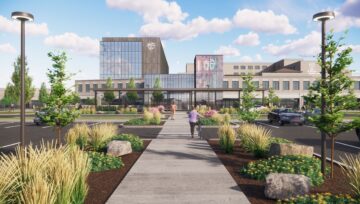 HSHS to invest $270 million in St. Mary’s, St. Vincent
HSHS to invest $270 million in St. Mary’s, St. Vincent Paving the way for the next generation of truck drivers
Paving the way for the next generation of truck drivers


